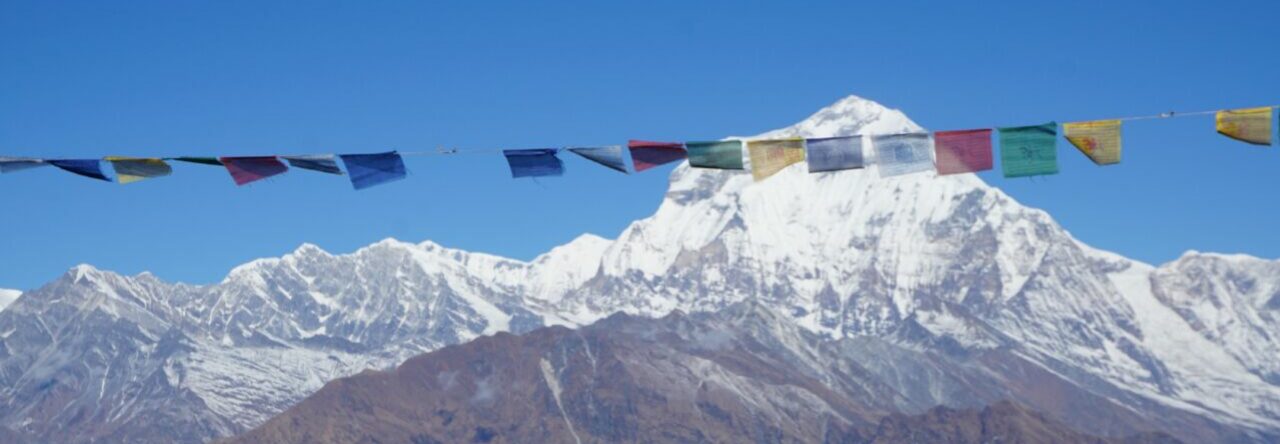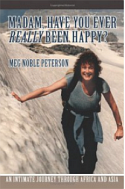You may remember that I took a trip into the heart of Tibet with my eldest daughter, Cary, in the spring of 2004. After visiting Lhasa and various monasteries in the area, we drove inland and camped, mixed with nomads, and circumambulated sacred Lake Mansarovar, across the great plain of Barga at the base of the majestic Mount Gurla Mandhata. This and Lake Rakshas Tal are the highest bodies of fresh water in the world.
After attending the famous Saga Dawa Festival in Tarboche on June 3, my birthday, we headed up the holiest mountain in the Himalayas, Mt. Kailash (22,028 ft.) and over the 18,046 ft Dolma La, a difficult, but very satisfying trek to the rock-strewn and prayer flag-adorned top of the pass. There we placed remembrances of Christopher at the Bardo and the Tara rock. Circumambulating this mountain is an important pilgrimage for Hindus, Buddhists, and Jains. It was bitter cold as we climbed, and we set up tents along the way. But what amazed me was the number of Tibetan pilgrims who simply put down their blankets near the trail and slept out in the subzero weather.
One of many clear aqua lakes on our high altitude journey
I’ve written a lot about the Tibetan people and their courage. I’ve visited and supported students at the schools in Dharamsala and Suja, India, where children, many of them orphans who escaped over the mountains to freedom, find a new beginning. And I’ve attended two weeks of the Dalai Lama’s lectures at the Namgyal Monastery in Dharamsala. And now, once again, tragedy has struck the Tibetans, this time in the form of a devastating earthquake which leveled the city of Kyeku on the Chinese/Tibetan border. Although reports are that it is in northern China, it is really in the Tibetan region of Kham, which my daughter, Cary, visited in 2007.
The earthquake was 100 miles from the monastery of her Tibetan Buddhist teacher, Kilung Rinpoche. Monks from the Kilung Monastery are now in Kyeku with Tibetan food for those who have lost everything in the quake. This is direct aid being brought straight to those in the greatest need.
http://www.kilung.org/pages/projects/disaster-relief.htm
I imagine that most of you know of this disaster, but please spread the word. If people want to help, this is as immediate and direct as it gets, organized by people Cary and I know personally.
Since I wrote the above, there is even more information about the wonderful work being done for the survivors in Kyeku. I’ve been getting emails about a new program of providing yaks to the families who have lost everything. It was just launched a few days ago and is explained on the Kilung Foundation website. www.kilung.org Individuals and groups are encouraged to purchase these animals, which also saves the animals from slaughter and provides the families with nutritious milk products so necessary for their diet. For more information about this YAKS FOR EARTHQUAKE RELIEF program, write to: Rigdzin Chodron at [email protected], located in Langley, Washington. This is a dedicated friend who can give you a chance to participate in this practical program of lasting and sustainable help for these families.
For those of you who want to see more photos of the campaign to help the people of Kyegu, visit Kilung’s flickr sites below:
http://www.flickr.com/photos/kilung/sets/72157623795609117/
http://www.flickr.com/photos/kilung/sets/72157623822601097/
Most of my photographs from this 2004 trek were taken before I had a digital camera, but there are a few from friends and from Cary that I would like to share with you. We visited many more temples and monasteries than are pictured here and we were careful not to photograph the people who indicated that it was a breach of their privacy. This is totally understandable, but limits our description of the richness of the experience.

The octagonal Kumbum Stupa, which houses 70 chapels and has six levels, and is part of the Palkhor Chode Monastery in Gyantse
Decorate rocks near Drepung Monastery, Lhasa



























